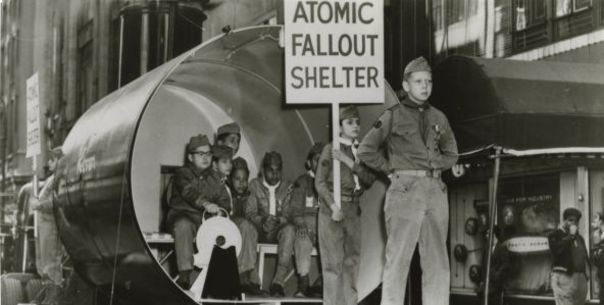Found Footage - Part II
Following our first descent into the world of found footage, we now look at further examples of how filmmakers can manipulate existing images to convey new meanings.

THE ATOMIC CAFE
When Ken Jacobs found a film reel in a garbage can in 1985, he instantly knew that he had to rescue it – it was perfect. He picked it up, put it together, and screened it without any changes. He gave it the title of PERFECT FILM, and turned it into a very interesting example of experimental filmmaking with found footage, with a non-existant degree of intervention on the material. Jacobs knew that the raw energy of witnesses’ reactions to the murder of Malcolm X needed no alteration.
TOM, TOM, THE PIPER’S SON (1969), on the other hand, required a completely different approach. It is a one-minute long sequence which Ken Jacobs turned into a 90-minutes film, altering it in every conceivable way: scratching or drawing or colouring all over the celluloid, zooming in and out, changing the frame-per-seconds speed. No trace of the original remained visible.
STAR SPANGLED TO DEATH (2004), one of Jacobs’ most renowned films, stands as a middle ground between the two, covering a journey of six hours through an endless amount of images produced in and by the United States in the last 100 years. As in a dark cinematographic aleph, we get to witness the racist ethnographic films of Osa and Martin Johnson, a television programme trying to explain how love works by experimenting on a monkey, cartoons from the 20’s, home movies and more. Jacobs organizes the long excerpts by using a non-intrusive voice over. The rationale behind the choice of images is elusive, making the film a calm zapping through that gigantic factory of images that are the United States.
One of the most extreme and fascinating examples of found footage documentary films is THE ATOMIC CAFE (1982, by Jayne Loader, Kevin and Pierce Rafferty). Just as in ROSE HOBART and PERFECT FILM, the genesis of this work is fortuitous: Pierce Rafferty stumbled upon a catalogue of “3433 U.S. Government films” in a San Francisco bookstore. The catalogue included animations, newsreels, institutional short films and educational and propaganda movies about the Cold War and the atomic bomb. He immediately bought the catalogue and involved his brother Kevin and the journalist Jayne Loader to discuss what to do with the materials. It was obvious that a movie could be made using all that footage. The question was, which one?
As time went by and the lenght of the footage increased, they realized that those images were so powerful that they didn’t need to be altered. They illustrated the spirit of the 40’s and 50’s so clearly that voice overs, music and intertitles were superfluous. The result is both hilarious and frightening - a faithful account of an era marked by lies and paranoia.
Of course, not all found footage films can be easily categorized as experimental or documentary. The work of Yervant Gianikian and Angela Ricci Lucchi is halfway between both universes. The couple is obsessed with war, and they made it the central theme of UOMINI, ANNI, VITA (1990), PRIGIONIERI DELLA GUERRA (1996) and OH, UOMO (2004), just like the atomic age was at the core of THE ATOMIC CAFE.
Fires, mass graves, massive exiles, battles, military parades: the images viscerally illustrate how wars, massacres and genocides affected landscapes, cities and people. However, unlike THE ATOMIC CAFE, the work of Gianikian and Ricci is not discursive. The editing is neither informative nor rhetorical. The films weren’t made for us to know about the massacres but rather for us to feel them in our own flesh. The alterations of the image (colour filters, acceleration and deceleration, soundtrack) usually enhance the original sense rather than changing it. A sad image becomes sadder with music. A lysergic sequence is underlined by chromatic alteration.
That’s why their best film probably remains FROM THE POLE TO THE EQUATOR, a kaleidoscope of expeditions and journeys undertaken at the dawn of the twentieth century. In this film-trance the phantasmagorical and feverish atmosphere reaches peaks of great intensity.
The universe of found footage is incredibly big and fertile. The appropriation mechanisms are endless. From the violent ones that mutilate images until they become unrecognizable, to the more subtle ones, that generate sense through editing. From propaganda to reflection. Homage and criticism. Rescue from decomposition and creation of thematic catalogues. Obsessive exploration of a single image or frantic montage of thousands. There is still a lot of ground to cover – there are as many possibilities as images.


301 Moved Permanently